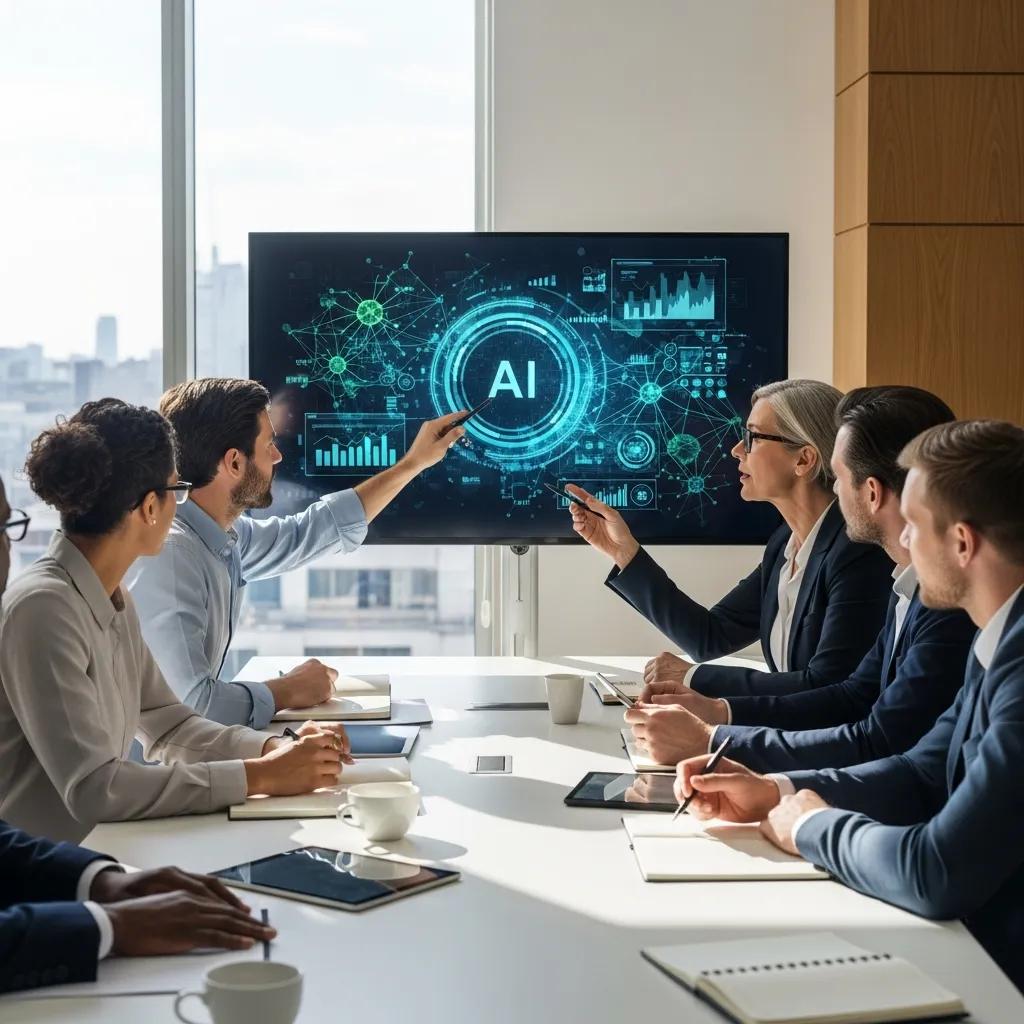The rise of the Chief AI Officer (CAIO) marks a turning point for businesses adopting AI. This new executive role dedicated to AI also presents significant challenges. These leaders must connect promising AI technologies with practical, ethical applications.
Challenges Faced by Chief AI Officers
Bridging the Gap Between Hype and Reality
One key challenge for CAIOs is managing expectations surrounding artificial intelligence technologies. The excitement around AI, particularly generative AI, often leads to unrealistic goals. CAIOs must balance this enthusiasm with practical assessments of AI’s true potential.
This involves clearly communicating what AI can and cannot achieve. Accenture’s pulse of change survey reveals most C-suite leaders view generative AI as an opportunity, highlighting the importance of this balancing act.
Building and Managing AI Talent
Attracting and retaining skilled AI professionals presents a major hurdle. The demand for AI talent is intense. CAIOs face this challenge while striving to create a positive work environment.
This includes promoting learning and development and offering competitive salaries. In the current job market, the difficulty in finding qualified AI employees increases hiring costs.
Navigating Ethical Considerations and Data Governance
AI ethics are crucial for maintaining public trust and ensuring responsible AI development. Algorithm bias, data privacy, and potential misuse of AI are real concerns CAIOs must address. Data governance policies are a primary area for CAIO oversight.
A White House memorandum on AI leadership from October 2024 outlines the responsibilities of federal agency CAIOs. It emphasizes the importance of “safe, secure, and trustworthy AI,” reflecting governmental concerns about AI ethics and data science. This increases the responsibilities for the officer role.
Integrating AI Across Business Operations
AI isn’t a standalone solution; it needs to be integrated into various business functions. A CAIO must work with multiple departments. Collaboration ensures successful implementation of AI strategies across business processes.
The primary objective for many Chief AI Officers is supporting overall business objectives. These initiatives could involve driving revenue, improving productivity, enhancing customer experiences, or reducing operational costs through various strategic initiatives and innovative AI solutions.
Dealing With Legacy Systems and Change Management
Many organizations use outdated technologies. Integrating AI into these older systems creates a significant obstacle. This integration process adds to the leadership responsibilities of the CAIO. Change management and communication become increasingly important throughout the AI integration lifecycle.
CAIOs may need innovative approaches to implement AI technologies and machine learning. They must adapt their AI strategies and find ways to integrate these advancements seamlessly into existing systems. A cohesive approach is important.
Demonstrating ROI of AI Projects and AI Initiatives
Businesses invest in AI expecting a return. The Chief AI Officer is tasked with showcasing the successes of AI programs. AI spending must align with business stakeholders. The effectiveness of the Chief AI Officer’s strategies influences resource allocation decisions for subsequent projects.
AI is impacting corporate innovation priorities. The White House memorandum suggests that regular, public ROI updates from agency CAIOs could become standard practice. These regular reports ensure responsible AI.
Staying Ahead of the Curve in the Rapidly Evolving AI Landscape
AI is constantly changing. Staying informed about new AI technologies is a major responsibility for any Chief AI Officer. The pace of AI innovation demands continuous learning. The answer depends on a proactive approach to thought leadership and keeping pace with a rapidly evolving landscape.
CAIOs must stay current on emerging trends. This ensures AI initiatives remain effective. This often involves engaging with other senior AI leaders and AI technologies experts for insights and advice.
FAQs about Challenges faced by Chief AI Officers
What is the biggest challenge facing AI?
Building trust and responsible implementation are critical challenges. This includes addressing ethical concerns, safeguarding data privacy, and promoting transparency in AI decision-making.
What does a chief AI officer do?
A chief AI officer guides an organization’s AI strategy. This encompasses researching and developing new AI applications. The CAIO role focuses on business needs and implements effective solutions.
The CAIO ensures ethical AI usage. This involves establishing an AI strategy and privacy policy. Aligning these initiatives with business objectives is paramount.
Their typical responsibilities include:
- Developing and implementing AI strategies.
- Overseeing AI projects and investments.
- Leading AI innovation and research efforts.
Their responsibilities include evaluating AI technologies and customer service tools.
What are the challenges of artificial intelligence in the military?
Military-specific AI challenges involve autonomous weapons systems. They also include ethical considerations around AI’s role in warfare and protecting against cybersecurity vulnerabilities. A dedicated AI officer would oversee such efforts.
What are the challenges in regulating artificial intelligence?
Regulating AI is difficult due to its novelty and rapid evolution. Creating effective regulations while addressing legal uncertainties about liability pose significant challenges.
Concluding Thoughts on Chief AI Officer Challenges
The rise of the Chief AI Officer marks a significant step for organizations. The challenges CAIOs face directly affect a company’s success with AI projects. These roles ensure that AI initiatives are strategically deployed responsibly. CAIOs hold key leadership responsibilities within large organizations.
As AI’s influence expands, the CAIO’s expertise will be essential. Their navigation of AI’s complexities will shape how industries leverage this technology. CAIOs drive AI innovation, impacting customer experiences, and streamlining business operations.






